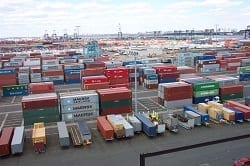Companies involved in cargo transport units (CTU) logistics, whether moving general cargo, refrigerated or dangerous goods – by road, rail or sea – are affected and must comply with the new CTU regulations by July 2016.
Following three years of development, the extensively revised and upgraded IMO/ILO/UNECE Code of Practice for Packing of CTUs was approved by the International Maritime Organisation (IMO) and the United Nations Economic Commission for Europe (UNECE) in January 2014, and by the International Labour Organisation (ILO) in November 2014. Many incidents in the transport industry can be attributed to poor practices in the packing of CTUs, including inadequate securing of the cargo, overloading, and incorrect declaration of contents. This is of major concern, as the victims may be transport and supply chain workers, or the general public, who may have no control over the packing of these units. According to Liz Anderson, executive director at the Responsible Packaging Management Association of Southern Africa, “Implementation of the requirements of the CTU Code should help to improve safety on our roads and railways, as well as through our ports and at sea through better packing, securing and weighing of containers.” The current code is an update of the 1997 IMO/ILO/UNECE Guidelines for Packing of CTUs and was endorsed by the IMO Maritime Safety Committee, the UNECE Inland Transport Committee, and the ILO Governing Body in 2014. Within the code, comprehensive information and references on all aspects of loading and securing of cargo in containers and other intermodal transport are provided, taking account of the requirements of sea and land transport modes.It applies to transport operations throughout the entire intermodal transport chain and provides guidance not only to those responsible for packing and securing cargo, but also to those who receive and unpack such units. It also addresses issues such as training and the packing of dangerous goods.
The code is intended to assist the industry, employers’ and workers’ organisations as well as governments in training their staff on the safe stowage of cargo in containers. It can also be used as a reference base for national regulations and could become a model for internationally harmonised legislation in this field, should such requirements arise. Compliance with the laws set out in the code will help organisations reduce their exposure to risk and potential liability. The type of cargo carried in freight containers has expanded over the years and innovations such as flexi tanks allow heavy, bulky items that were traditionally loaded directly into a ship’s hold (e.g. stone, steel, wastes, and project cargo), to be carried in CTUs. A person who packs and secures cargo into/onto the CTU may be the last person to look inside the unit until it is opened at its final destination. Consequently, a great many people in the transport chain will rely on the skill of such persons, including:- road vehicle drivers and other road users when the unit is transported by road
- rail workers, and others, when the unit is transported by rail
- crew members of inland waterway vessels when the unit is transported on inland waterways
- handling staff at terminals when the unit is transferred from one transport mode to another
- dock workers when the unit is loaded or unloaded
- crew members of a seagoing ship during the transport operation
- those who have a statutory duty to inspect cargo
- those who unpack the unit







